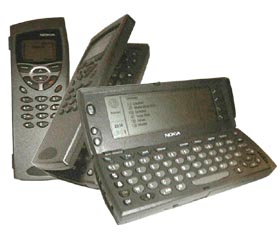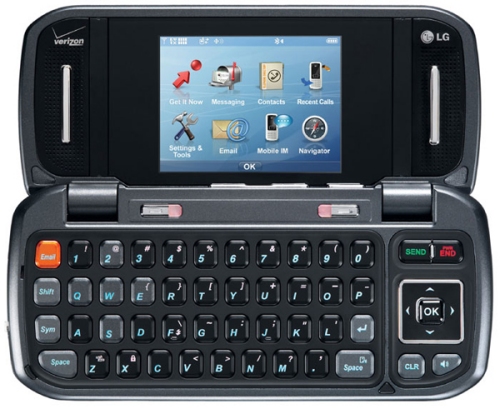
With the setting of trends in the cell phone, I was curious to see where the trends started that have made today's phones multi-capable devices.
Back in 1992, there was this little device called Simon, developed by none other than IBM. It was not only the world's first "smartphone" but it also featured a touch screen, email, world clock, calculator, address book, notepad, and games, with included functionality of a pager, fax machine, PDA, and of course cell phone. Every smartphone today has these features, most have more, with video sharing, MMS, GPS, etc. Heck, most cell phones, not smartphones, have all of these features. Your simple $20 go phone has all or most of those features, save the touch screen. Although this was a little out of hand, in price, $899, and availability, release in 1994 in only in 190 U.S. cities in 15 states, this set the standard for what a smartphone should be - loaded with everything but the kitchen sink.

The Nokia Communicator line was the next huge step in smartphone, offering a QWERY keyboard, which is hidden behind t
he face of the phone, which flipped vertically along the phone to offer a screen and keyboard, while still preserving the generic numeric pad on the front of the phone, with usual call/drop buttons, menu and navigation buttons, with a small screen on the front as well. There are plenty of cell phones using the Communicator's design to this day, including the later versions of the Communicator, the LG enV, and U740 from Samsung, which offered a dual-flipping phone (pictured below):

The enV from LG
 The U740 from Samsung
The U740 from SamsungMost smartphones out today take some mold to the Simon or Communicator. AT&T/Cingular introduced their line of branded smartphones which combine a touch screen along with a slide-out keyboard, which few companies have used on standard mobiles, such as Motorola's new ROKR E6, which integrated iTunes in the original release of the ROKR.
Cellphones usually take one of three forms: candybar, clamshell, or slider. There have been a few who have tried to integrate a new style such as the "swivel", pictured below with the popular T-Mobile Sidekick 3, or a more proprietary form, such as the Nokia pictured below, which rotates. Nokia 3250
Nokia 3250
 T-Mobile Sidekick 3
T-Mobile Sidekick 3
Cellphones usually take one of three forms: candybar, clamshell, or slider. There have been a few who have tried to integrate a new style such as the "swivel", pictured below with the popular T-Mobile Sidekick 3, or a more proprietary form, such as the Nokia pictured below, which rotates.
 Nokia 3250
Nokia 3250 T-Mobile Sidekick 3
T-Mobile Sidekick 3What influence has the RAZR had? Well, they practically started the Slimmest Cell Phone War of the 21st Century. Also, the RAZR's unique keypad design, which they claim is laser etched, has branched over into the landline phones as well, with design of keypad and sleekness, compared to bulky cordless phones.
 VTech DECT 6.0
VTech DECT 6.0
sons and daughters. I've seen 10 and 12 year olds with better phones than me! Thankfully, we still have age limits for drivers' licenses, else pre-teens could be seen on the streets with Blackberries AND Hummer H2s.
 VTech DECT 6.0
VTech DECT 6.0Oh, and remember when it was a commodity to own a cell phone, kind of like it was to own a TV, two cars, satellite TV, etc.? Well, with the growing number of plans available for families to share, the entire family is mobilized, from the white collar father, the soccer mom, and the actual soccer
No comments:
Post a Comment